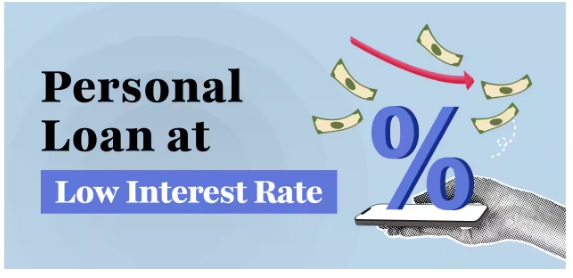Having in mind the financing of your requirement, personal loans are among the most sought-after ones. It is not that simple to secure a personal loan, though; interest rate of a personal loan also comes into play. Interest rate has a humongous role while influencing the price of borrowing, quoting the amount you pay back in the course of the loan. The determinants of the same rates range from personal credit history to market forces. In the discussion that follows, we will elaborate on different determinants of personal loan interest rates and the best approach borrowers can use while making their choice.
What Is the Interest Rate on Personal Loan?
Personal loan interest rate is the rate percent on which the lender will charge you to lend you money. It is the extra that you have to repay over and above the initial loan borrowed. The rate can either be fixed (it will not change during the loan term) or variable (can change according to market forces). You should know how interest is calculated because it can have a huge impact on your repayment plan.
Key Factors That Determine Personal Loan Interest Rate
There are a number of determinants of a rate of interest on personal loan. Knowing them will assist you in getting more favorable terms of the loan and better management of your finances.
1. Credit Score
Your credit score is the biggest factor in determining your interest rate on an unsecured personal loan. Credit behavior is measured as good credit score, and that reduces lenders’ risk. Borrowers who are creditworthy are typically given low interest rates, while bad credit receivers may be given premium rates or even a denial of a loan.
2. Stability of Income and Debt-to-Income Ratio
One more crucial aspect lenders look into is your debt-to-income ratio and stability of income. Your income stability assures the lender that you would be able to repay the loan with much ease. Secondly, if you have a low DTI ratio, i.e., lower outstanding debt compared to your income, lenders feel comfortable lending you with superb interest rates.
3. Loan Amount and Tenure
The repayment period of the loan as well as size of the loan also have a significant role to play in fixing the interest on a personal loan. The larger the repayment period or size of the loan, the higher will be the risk for the lender to undertake over the longer period. Or, by assuming a smaller repayment period, the interest can be minimized but your installment will be higher.
4. Type of Work
Your occupation and your professional identity also determine your interest rates on the loans. The individuals with a permanent income due to consistent work typically receive low interest rates because the lenders consider them as less risk factor clients. Freelancers, self-employed professionals, or the people of unstable employment might just receive higher interest rates because of the uncertainty of the finances in comparison with their profession.
5. Economic and Market Conditions
Conditions such as inflation, monetary actions by central banks such as Federal Reserve or Reserve Bank of India, and general economic situation all indicate the direction of lenders’ interest rate setting. For instance, during periods of high inflation, lenders will charge more interest to compensate for the risk that comes with adverse economic conditions.
6. Types of Lender
Not everyone who lends money is identical. Banks, credit unions, and online lenders will offer differently based on their methods and assumptions of risk. It is wise to compare prices and ask for quotes from a number of different lenders as a way of trying to get the best deal.
Know the Formula of Calculation of Interest
Know the formula of calculation of interest is important in arriving at the actual borrowing cost. Interest on a personal loan is often calculated based on fixed interest or compound interest formula. Although the fixed interest remains constant, the compound interest is found on the principal and the accumulated interest over time, where the amount paid is higher.
Compound Interest Formula
Compound interest is found by the following formula:
A = P (1 + r/n) ^ nt
Where:
- A is the amount (principal + interest accrued)
- P is the principal
- r is interest rate
- n is the number of times interest is compounded annually
- t is time expressed in years
When you borrow a personal loan, ensure the lender applies a fixed or compounded model of interest since it actually lowers your payment unbelievably.
Reducing Your Personal Loan Rate of Interest
Decreasing your personal loan rate of interest will prove to be a wise decision in the long term. Here’s why:
– Improve Your Credit Rating:
Pay on time and maintain a clean payment history.
– Shop for Loans Offline and Online:
Compare shop offline and online for loans to get competitive terms.
– Shorter Term Pay:
If possible, pay your loan in a shorter term in an effort not to have to pay interest.
– Banks Negotiate:
Banks and lending banks normally have fixed rates of interest; negotiate to see if you can get it reduced.
– Prequalify Loans:
Determine if you prequalify with some lenders so you will be aware of potential interest rates before you apply.
Conclusion
Personal loan interest rate is a very important consideration while choosing the proper method of finance. Your credit score, stability of income, length of loan, and even market condition decide at what rate of interest you are being provided. Being familiar with these and applying formulas such as compound interest formula, you can easily find the effective cost of repayment and take the right decision.
To get better terms, never shy away from checking your credit report, shopping around for loan lenders, and doing everything possible to boost your credit score. Thus, you can balance affordability and usage effectively to optimal levels in a way that your borrowability corresponds to your financial objectives.
